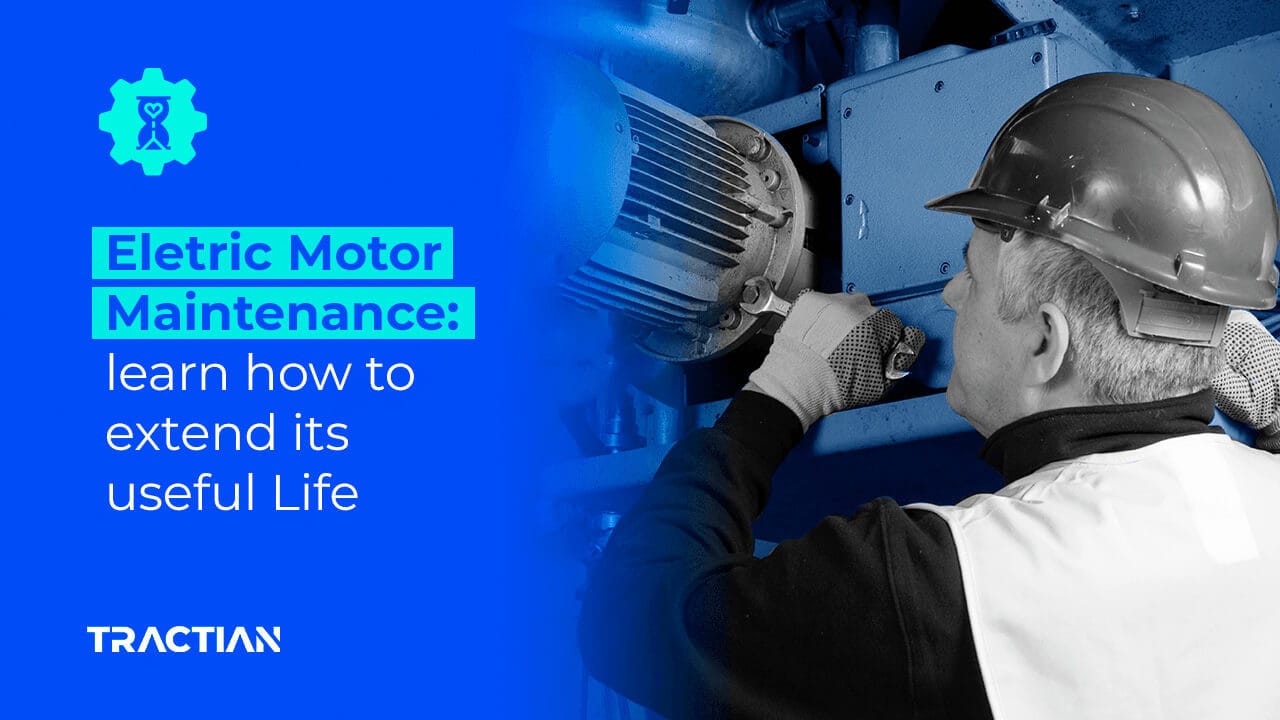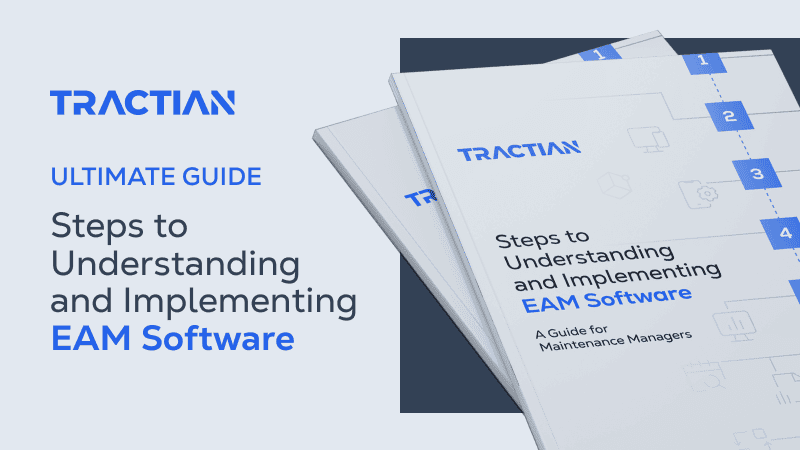If there is one thing that cannot, under any circumstances, be overlooked in the manufacturing sector, it is the electric motor. According to PROCEL (Brazilian National Program for the Preservation of Electricity), this equipment is responsible for 68% of the electric power consumption in the Brazilian industrial sector (and in certain segments, such as the textile industry, the consumption reaches 98%). Therefore, it would not be an overstatement to say that the electric motor is the heart of the industrial plant: essential for all production stages, no factory can survive without it.

A good maintenance manager, thus, will always turn his or her attention to the motors, ensuring that their specifications and installations are correct and that they work under the best conditions and performance parameters – thereby avoiding machine breakdowns and unexpected production shutdowns.
However, let’s face it: it is not enough to just check the motors once in a while, perform preventive maintenance here and there, and hope that everything operates as scheduled. It is necessary to develop a strategic maintenance plan, with technology-based and diversified techniques, to actually anticipate failures and keep the performance of the electric motors (and all the machinery) under your control.
TRACTIAN has selected some tips to help you not only avoid broken motors and financial losses to the company, but also improve the performance of your equipment and staff, reducing maintenance costs and increasing the organization’s profitability. Check out below some affordable and assertive techniques for electric motors care and monitoring. Enjoy your reading!
The optimal plan
As we have previously mentioned, there is no point in sticking to an average and predictable maintenance plan, consisting mainly of random preventive inspections and emergency repairs that are expensive for the organization. A good maintenance plan for electric motors requires constant, detailed, and individual verification, considering the specifications and the conditions of each motor.
As you may already know, it is essential that the manager always keeps track of all the machine’s data, its technical documentation, the date of the last inspection, descriptions of the repairs made, etc. This type of register helps the team to determine the cause of sudden failures, preventing them from happening again.
In the next topic, we will list some of the main preventive activities that make up a good maintenance plan for electric motors. We must highlight, however, that although routine inspections are important, the plan must give priority to data collection, constant verification, and analysis of the asset’s indicators to ensure that failures will be avoided and will not endanger the correct production workflow. And to ensure that all these needs are addressed in the best way, there is no more cost-effective and assertive strategy than to implement predictive techniques rather than preventive ones.
Can you imagine being able to visualize your engine data in real time and have automatic alarms about the equipment’s health? Well, you can do that when your maintenance plan relies on online asset monitoring softwares based on artificial intelligence. Through these predictive tools, you have access to analysis, insights, and automated Service Orders that indicate exactly when and where to do repairs and preventive inspections, reducing maintenance costs and making the team’s job easier.

This is the ideal electric motor maintenance plan, perfect for leaders who understand how important it is to take good care of the heart of the industry and stay always one step ahead of failures and unexpected production shutdowns. But of course, even with the help of technology and smart tools that monitor the engine 24/7, we should not completely discard preventive routines, which also bring good results to the organization when done in a strategic way. Here are some preventive activities that can improve the performance of your electric motor and extend its lifetime.
Key Activities for Preventive Inspections
Before introducing the essential activities for the preventive part of the maintenance plan, it is important to remind ourselves of the necessity to ensure that the conditions to which the electric motors are subjected will not affect the performance of their specified function.
For instance, it is common to find these machines in environments exposed to contamination and high temperatures – outside characteristics that must be taken into account by the maintenance plan, since they shorten the electric motor’s useful life. Another factor that deserves attention is the operation: it can have a variable or fixed regime, it can be continuous or with several starts during the day. All those factors influence the calculation of the engine’s criticality and, therefore, the need for maintenance.

The manager must also have all this information at his reach when choosing the right electric motor for each application – if this is done wrong, not even the best maintenance will be able to prevent equipment breakdowns. A good example would be an operation exposed to steam: if the motors used do not have adequate paint and protection, the MTBF (Mean Time Between Failures) calculation, which is an excellent indicator to measure the machine’s reliability, will be impaired.
We cannot fail to mention (although you may already be sick of hearing it) how crucial the correct installation of the electric motor is. This includes mechanical alignment, the power consumption protection system, and, of course, its handling by qualified personnel.
Finally, analyzing the engines’ conditions also helps the manager to determine the frequency and severity of the preventive inspections. They can neither be general or random: they must vary according to the criticality of the motor, its operation, its uptime, the environment where it is installed, among other indicators. That is why the implementation of predictive technologies that automatically measure the indicators and calculate the ideal periodicity for the preventive inspections of each equipment is so highly recommended.
Now that you know which points you should pay attention to in order to ensure the good performance of electric motors, take a look at some items to include in the planning for routine, semi-annual, and annual preventive inspections of this kind of equipment:

Online Monitoring: The Cherry On Top
As you may have already realized, the maintenance plan needs to be diverse, strategic, and not generalized, contemplating the individualities of each electric motor and its applications. In a Direct Current Motor, for example, the contact strips wear down over time, making regular and thorough monitoring even more crucial – unlike an Alternating Current Motor, which has shielded bearings that don’t even require re-lubrication.
That is the reason why vibration, temperature, unbalancing and other symptoms of electric motors (especially those with greater criticality) must be monitored and assessed in real time. This is the only way for the maintenance manager to ensure that no failure signals go unnoticed and that no unexpected shutdown will jeopardize the production.
The good news is that, thanks to advances in technology and the influence of artificial intelligence in maintenance engineering, you and your staff can focus on more important tasks while the work of collecting and analyzing machine data is done automatically. Online monitoring solutions like TRACTIAN do not look the other way but listen carefully to the equipment, assessing and sending insights to the manager about everything that is happening and can still happen with the electric motor.
The platform can also automate Service Orders and tell maintainers exactly when and where preventive inspections should be done. This saves time and money on random check-ups and reduces maintenance costs – as well as increasing profitability by making your assets more reliable and available through predictive maintenance.
One of the main automatic analyses offered by online asset monitoring is vibration. Through it, it becomes possible to identify potentially fatal issues for the electric motor that can be harmful to production and even to the safety of the employees. Some of the main defects caught in time by TRACTIAN are:

By avoiding problems that can break the machine and put a heavy burden on the organization’s budget, predictive maintenance technologies show that they are here to transform industrial maintenance plans. As we have already said in the topic about the ideal plan, there is no more cost-effective and assertive choice for the manager than implementing online monitoring tools for the electric motors, especially for those of greater importance.
Take Good Care Of The Heart Of Your Industry
Vital for the entire industrial operation, electric motors require an accurate, strategic, automated, and – since these features do not exist separately – mostly predictive maintenance plan.
The routine, semi-annual, and annual inspection activities we mentioned in the second topic are important, but they need to be thought through alongside predictive tools rather than randomly scheduled. This way, the manager ensures that the production will go according to the expected flow and that the company will not be harmed by failures that are completely avoidable.
Both your electric motors and staff deserve an intelligent, assertive, and up-to-date maintenance management that relies on an online monitoring software capable of performing real-time analysis and providing complete insights to maintainers. These solutions act like a stethoscope and listen deeply to your equipment, making sure that even the tiniest symptoms of future failures are identified in time. Better safe than sorry, right?
If you are interested in extending the life of the hearts of your industry by using a cutting-edge technology, don’t hesitate to contact TRACTIAN. Schedule a demo of our solution and change the way your team takes care of the most critical assets in production.


